No? Well, statistically speaking, yes you do. Here’s how you can find out and a guide to how you can deal with them.
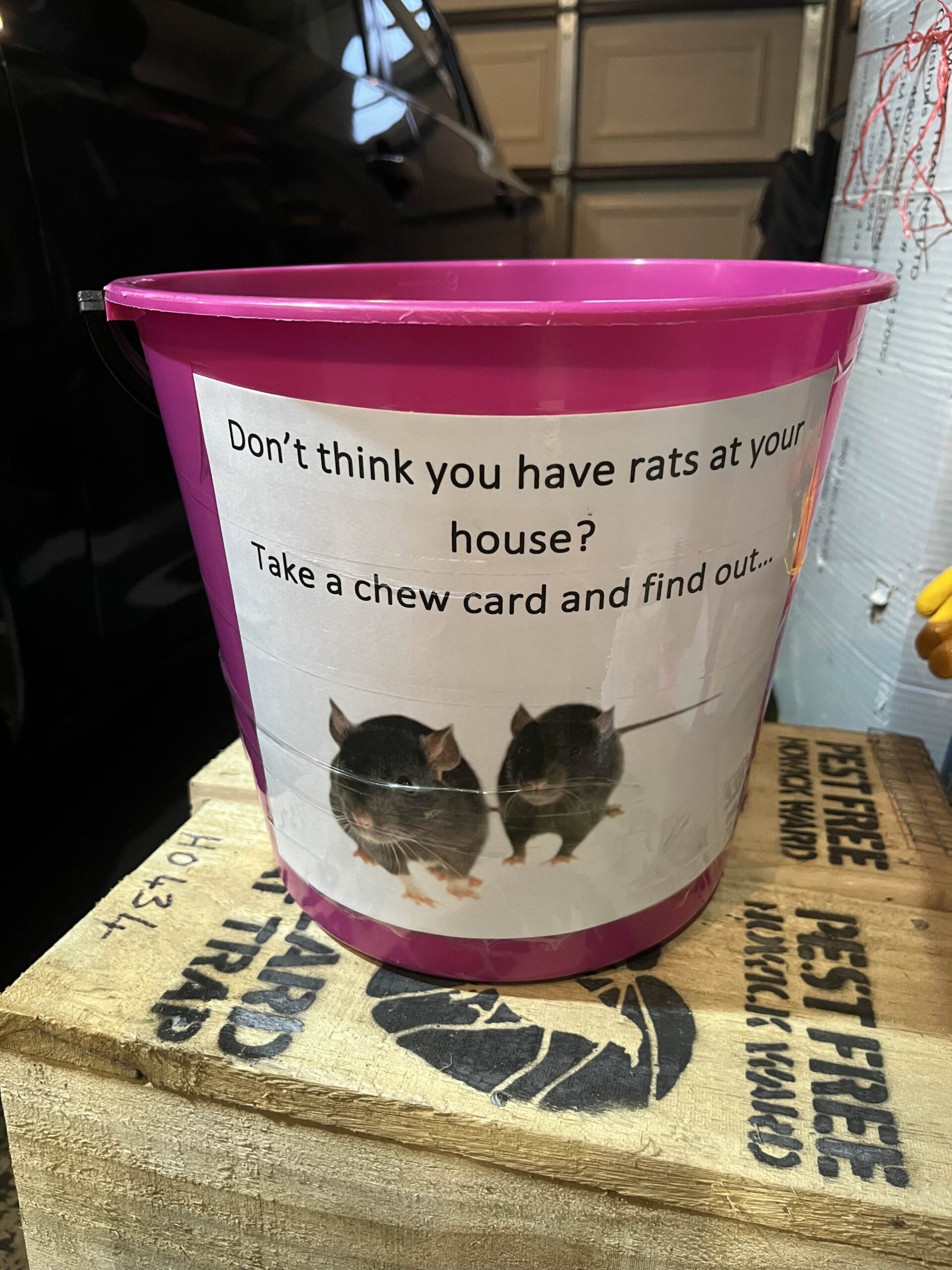
Chew cards
Chew cards are a great way to tell if you have rodents on your property.
Quite simply, chew cards are a piece of bent corflute with some lure and a nail in it.
Okay – there’s a bit more to it than that. The idea behind the chew card is that corflute is a very attainable and malleable material, which means animal chew marks show up very well on them, and the species is quite easily identifiable. This gives us a good indication on what kind of pests are lurking around a particular area.
To attract your rodent, you’re going to need bait! We recommend using peanut butter, or alternatively, mayonnaise. Bait is applied by squeezing it into the holes in the corflute.
Once baited, fold the card in two, and using the nail, attach it to your fence or another low lying surface where it’s reasonable that rodents could reach. Fencelines are recommended as these are generally areas rodents will run.
You should give 3-7 days for any chew marks to show up.
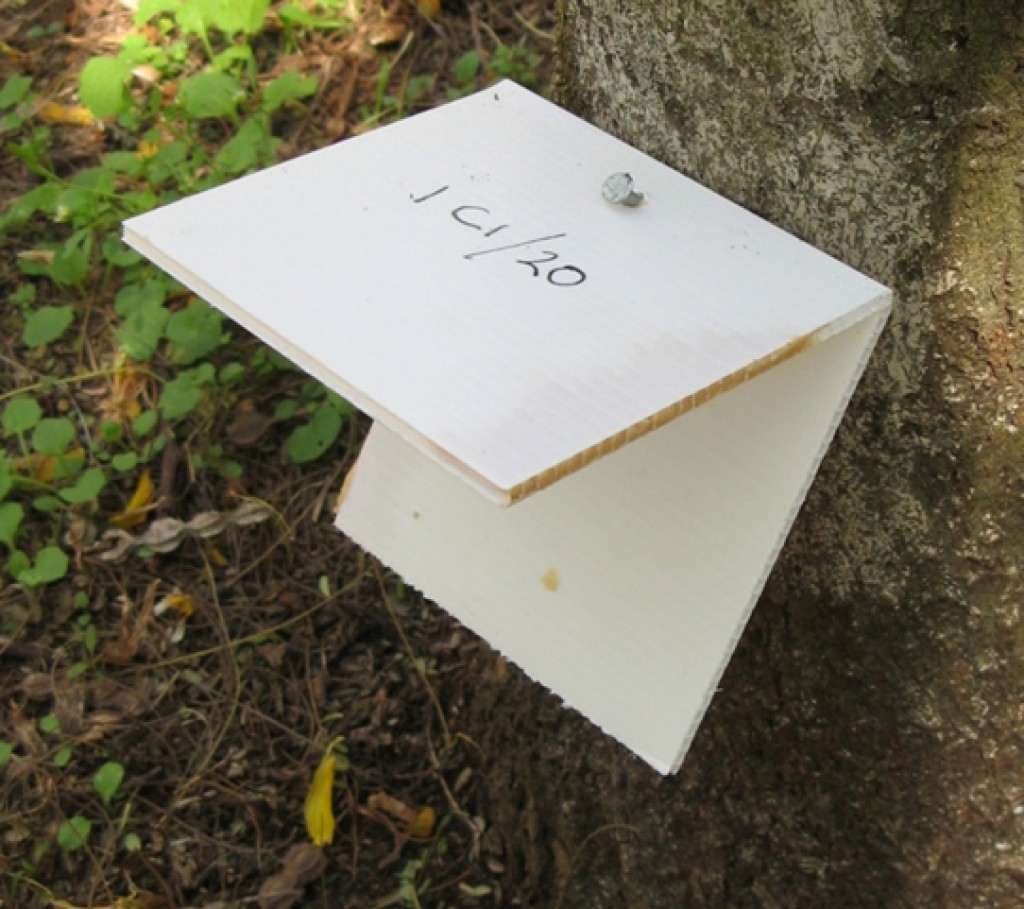
Rodent chew marks are pretty distinctive from other pest species, because generally they are the only ones to actually remove large sections of the corflute while chewing, as seen in the image below.
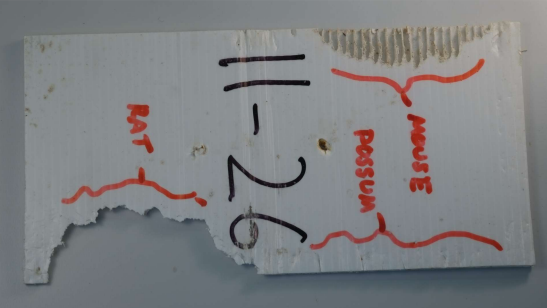
Pest Free Howick offers free chew cards at all trap handout events – or if you had some corflute and you wanted to make your own, it’s very easy – just follow this guide by Predator Free NZ: https://predatorfreenz.org/wp-content/uploads/2021/09/How_to_make_chew_cards.pdf
For more information on chew cards and chew marks from other species, Manaaki Whenua has this excellent resource: https://www.landcareresearch.co.nz/discover-our-research/biodiversity-biosecurity/animal-pest-management/chewcards-for-detecting-animal-pests/
Trapping
So what do you do once you’ve identified your pest peril? Start trapping! Pest Free Howick offers one free rat trap to every household in the Howick Ward, anywhere from Flatbush in the south to Bucklands Beach to the north. You can collect your free rat trap from one of our regular handouts, or you can have one delivered to you by filling in this form: https://pfhw.org.nz/get-started/join-our-project/
You’ll be given the option for two trap types – the T-rex and the Professional. I would recommend the T-rex if you aren’t familiar with trapping or if you’re less confident.
The Professional is much more sensitive and a bit trickier to use, so we recommend this for our experienced trappers.
Your trap will be placed inside a wooden tunnel to prevent any other unwanted animals from getting in or tampering with the trap.
All of our traps are humane kill traps that comply with animal welfare standards.
You’ll be given more information on how to check your selected trap once it’s delivered or when you pick it up. We also have some official tutorials on this page: https://pfhw.org.nz/pest-animals/#1706495214243-c601e680-54cf
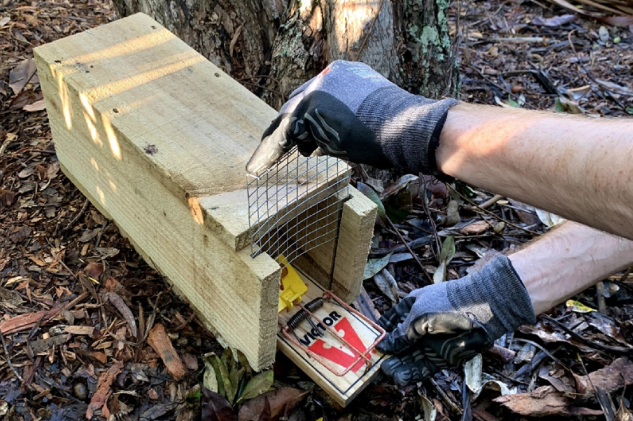
Placement of your trap can be very important. Rodents love to run along walls and fence lines, so this is usually a good placement idea. Both ends of the tunnel should be clear to give the impression that it’s an unobstructed passageway. You should also ensure your trap is placed on firm ground, so it doesn’t move while the rodents are inside, scaring them away.
Rodents can also be quite wary of new fixtures. For the first few nights with your trap, you could bait the trap without setting it, so the pests will become familiar and feel safe in the trap. It’s also advised to wear gloves whenever handling the trap, not just for hygiene, but also to prevent your scent from contaminating it and scaring away potential customers.
Peanut butter and mayonnaise are the two most effective baits, as far as human food goes. If your catches get low, switching bait can help regain some interest.
It’s very important that you report your catches if you take one of our traps! This is how we collect data and make assessments on the trapping project as a whole, so it’s very important we have this information.
You’ll be given the option to sign up directly to CatchIT, or email us at catches.pestfreehowick@gmail.com.
CatchIT is the site we use to record our catch data. If you sign up to this you can manually input data for your trap for us. We will create an account for you if you select this option.
If you choose to email, please remember to include a photo of your catch, unless you’re confident with what species it is you’ve caught. Also remember to include the date, the type of bait used, and the address at which the catch was made.
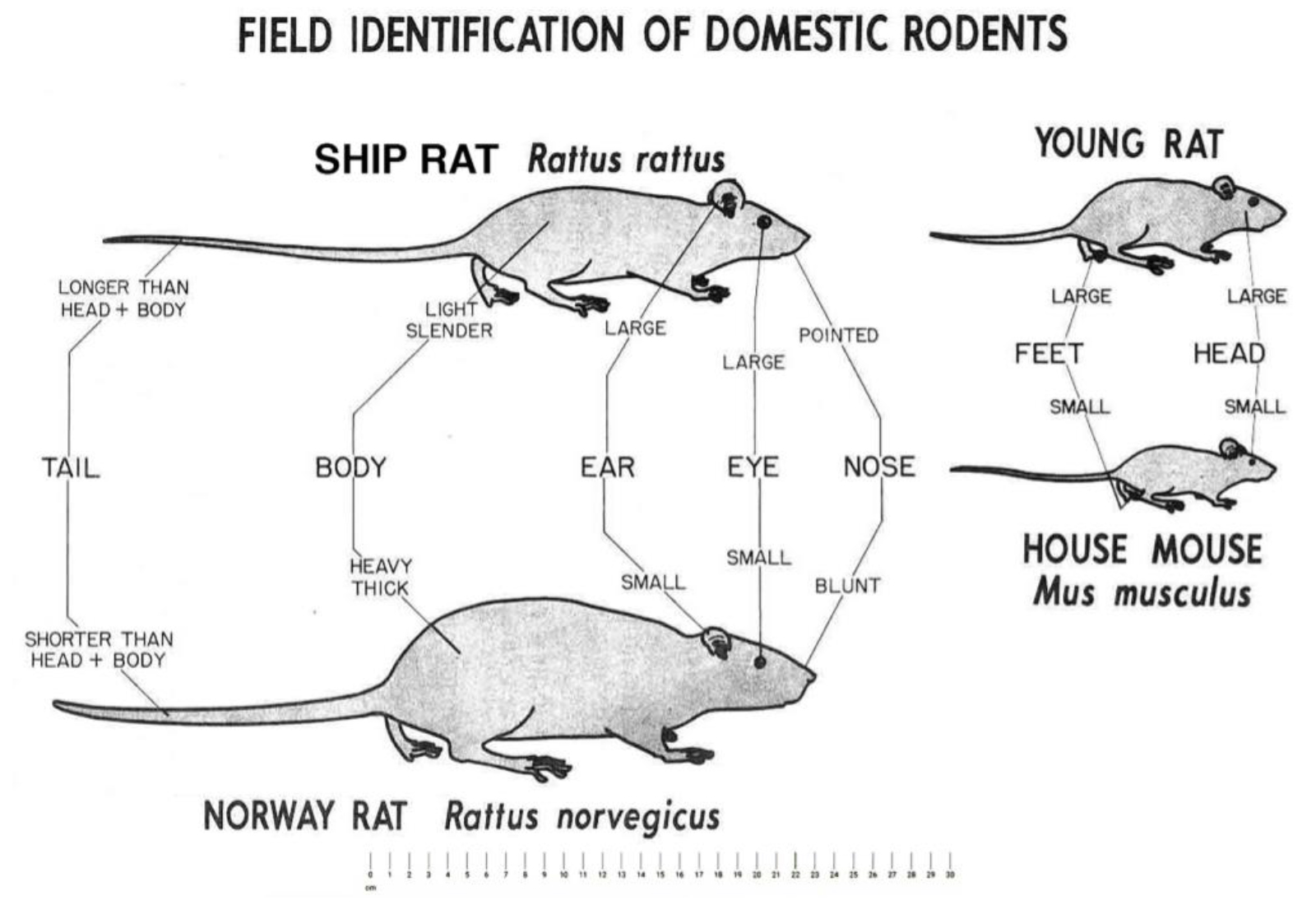
Trapping not for you?
Some other ways to help ward off rodents include:
- Making sure all of your rubbish is sealed and secured.
- Look for and seal any holes in your home they could be getting in through, especially around the kitchen.
- Avoid feeding birds with bread or grains – the reality is most of our native birds don’t use grains as a food source, it only attracts rodents and non-native species.
Our goal ultimately is to have one in every five households in the Howick Ward trapping. So what are you waiting for? Come grab a rat trap, or even just a chew card. It’s not just your own backyard you’ll be looking after, it’s everyone else’s as well.
By Alex Parker

© Copyright 2024 - PEST FREE HOWICK WARD
A Howick Local Board funded project

Leave a Reply